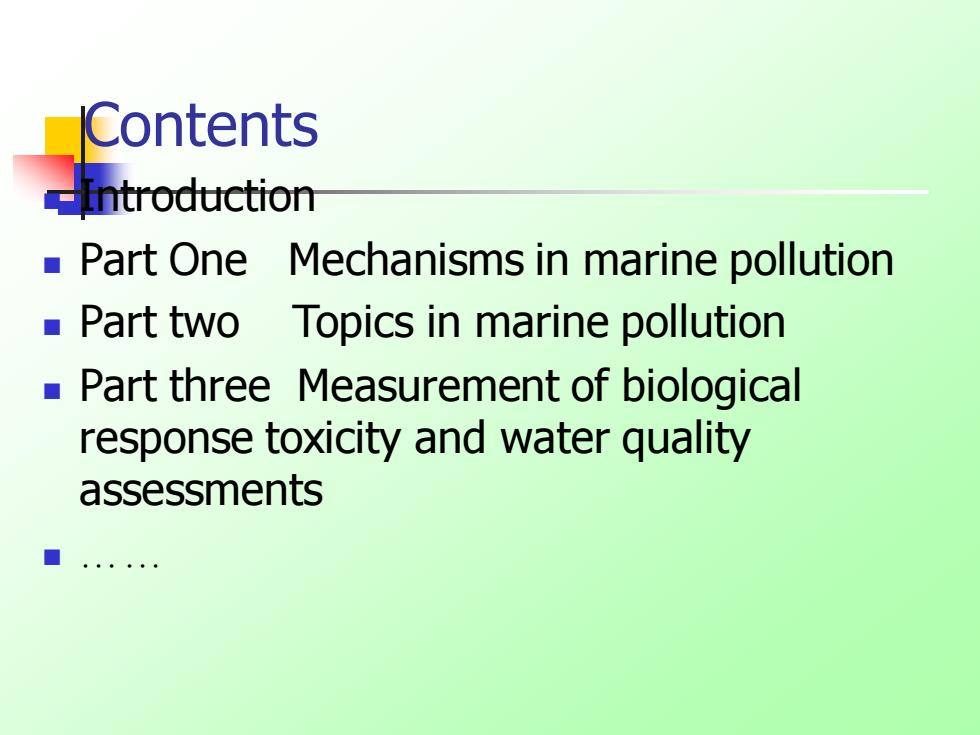
Contents ◼ Introduction ◼ Part One Mechanisms in marine pollution ◼ Part two Topics in marine pollution ◼ Part three Measurement of biological response toxicity and water quality assessments ◼
Contents ◼ Introduction ◼ Part One Mechanisms in marine pollution ◼ Part two Topics in marine pollution ◼ Part three Measurement of biological response toxicity and water quality assessments ◼
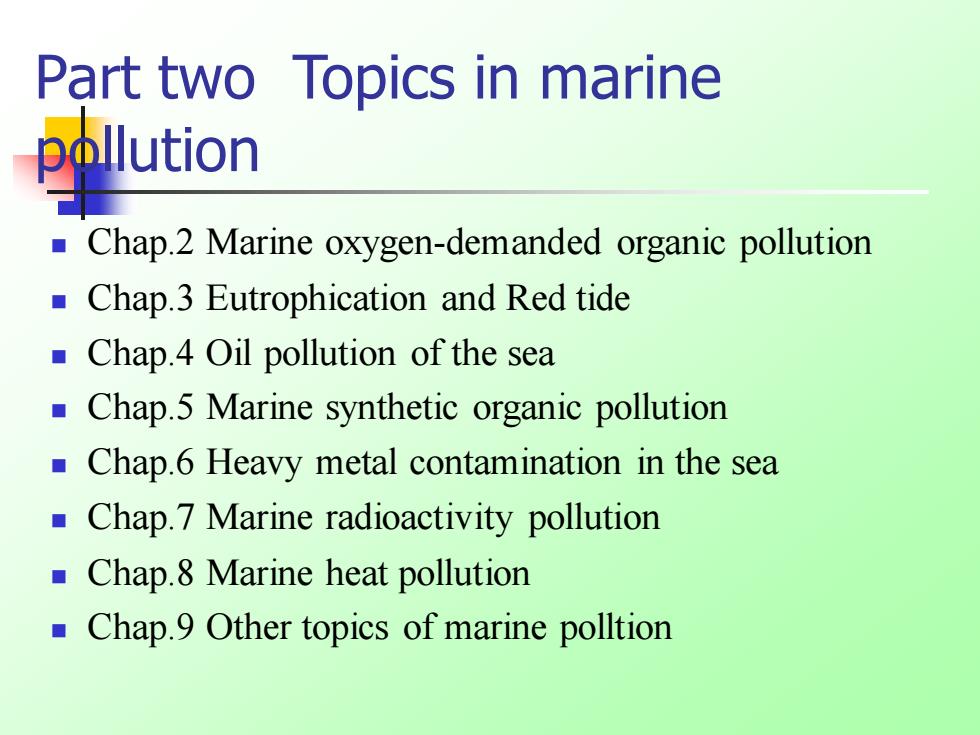
Part two Topics in marine pollution ◼ Chap.2 Marine oxygen-demanded organic pollution ◼ Chap.3 Eutrophication and Red tide ◼ Chap.4 Oil pollution of the sea ◼ Chap.5 Marine synthetic organic pollution ◼ Chap.6 Heavy metal contamination in the sea ◼ Chap.7 Marine radioactivity pollution ◼ Chap.8 Marine heat pollution ◼ Chap.9 Other topics of marine polltion
Part two Topics in marine pollution ◼ Chap.2 Marine oxygen-demanded organic pollution ◼ Chap.3 Eutrophication and Red tide ◼ Chap.4 Oil pollution of the sea ◼ Chap.5 Marine synthetic organic pollution ◼ Chap.6 Heavy metal contamination in the sea ◼ Chap.7 Marine radioactivity pollution ◼ Chap.8 Marine heat pollution ◼ Chap.9 Other topics of marine polltion
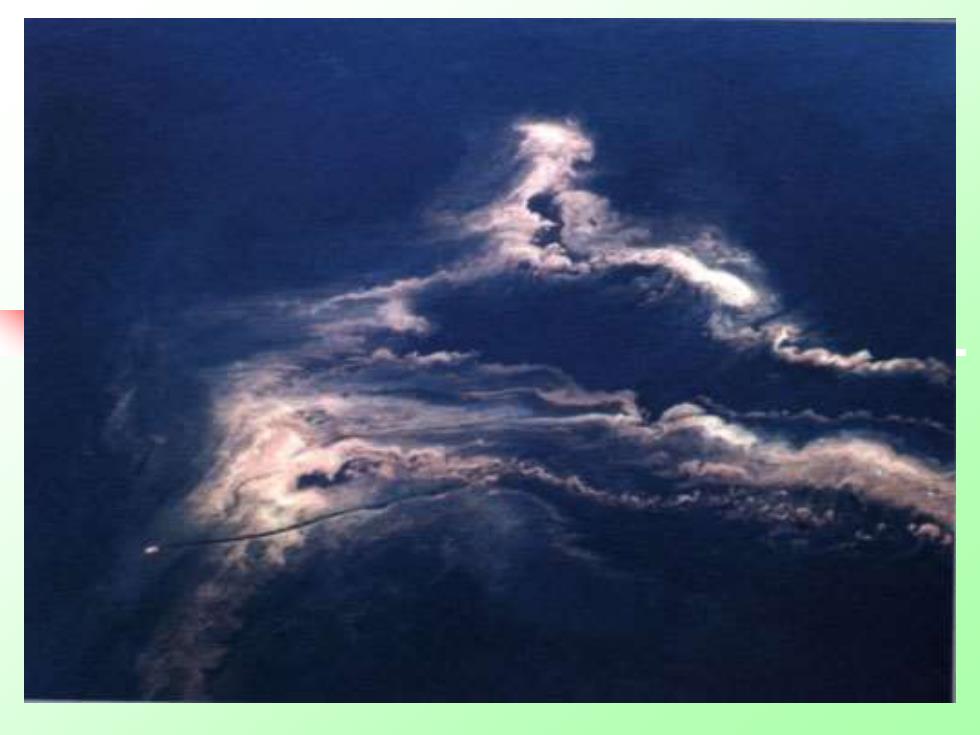
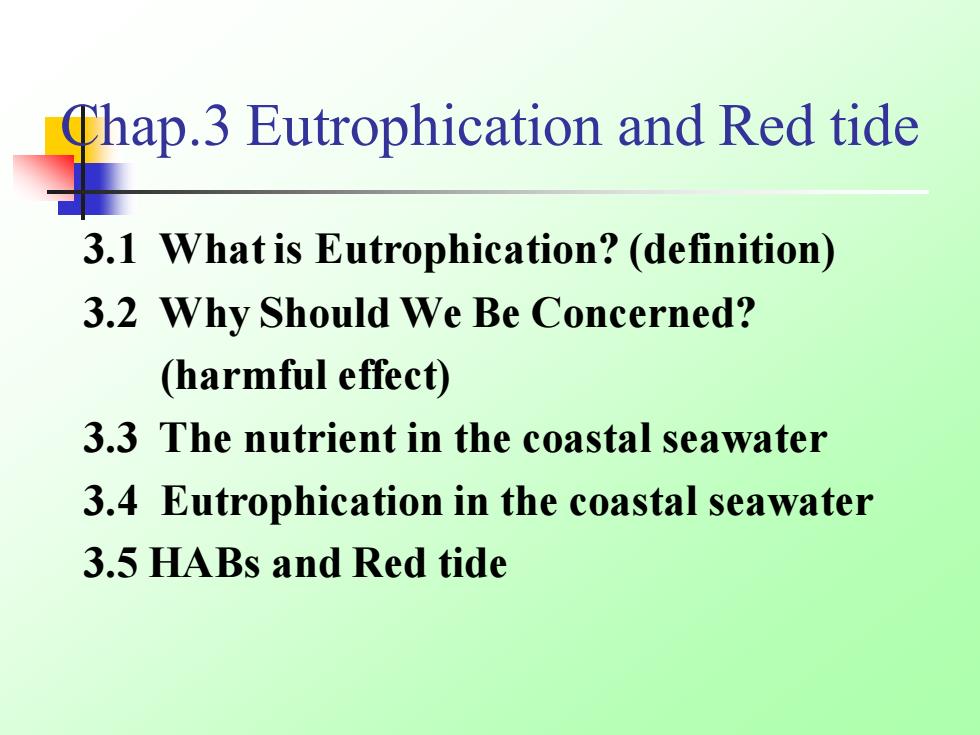
Chap.3 Eutrophication and Red tide 3.1 What is Eutrophication? (definition) 3.2 Why Should We Be Concerned? (harmful effect) 3.3 The nutrient in the coastal seawater 3.4 Eutrophication in the coastal seawater 3.5 HABs and Red tide
Chap.3 Eutrophication and Red tide 3.1 What is Eutrophication? (definition) 3.2 Why Should We Be Concerned? (harmful effect) 3.3 The nutrient in the coastal seawater 3.4 Eutrophication in the coastal seawater 3.5 HABs and Red tide
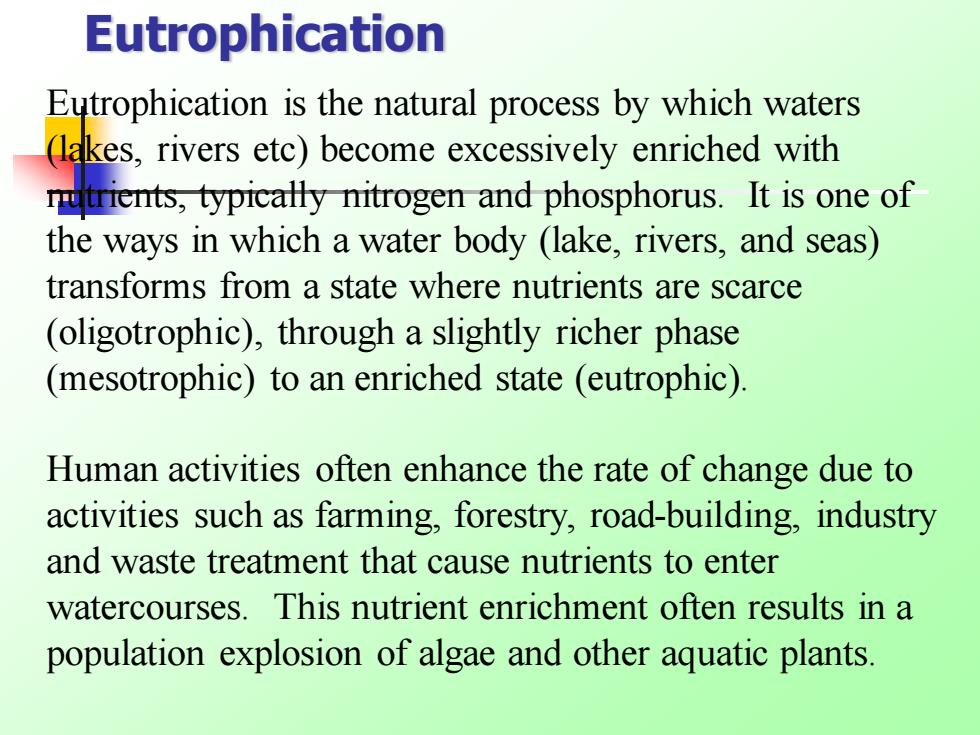
Eutrophication Eutrophication is the natural process by which waters (lakes, rivers etc) become excessively enriched with nutrients, typically nitrogen and phosphorus. It is one of the ways in which a water body (lake, rivers, and seas) transforms from a state where nutrients are scarce (oligotrophic), through a slightly richer phase (mesotrophic) to an enriched state (eutrophic). Human activities often enhance the rate of change due to activities such as farming, forestry, road-building, industry and waste treatment that cause nutrients to enter watercourses. This nutrient enrichment often results in a population explosion of algae and other aquatic plants
Eutrophication Eutrophication is the natural process by which waters (lakes, rivers etc) become excessively enriched with nutrients, typically nitrogen and phosphorus. It is one of the ways in which a water body (lake, rivers, and seas) transforms from a state where nutrients are scarce (oligotrophic), through a slightly richer phase (mesotrophic) to an enriched state (eutrophic). Human activities often enhance the rate of change due to activities such as farming, forestry, road-building, industry and waste treatment that cause nutrients to enter watercourses. This nutrient enrichment often results in a population explosion of algae and other aquatic plants
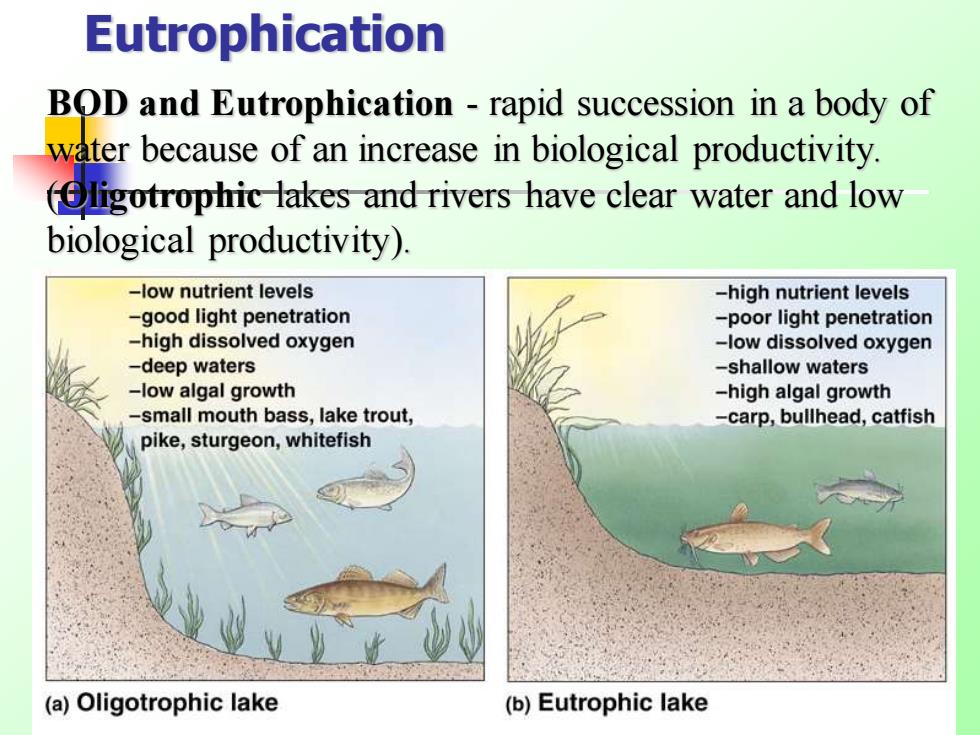
Eutrophication BOD and Eutrophication - rapid succession in a body of water because of an increase in biological productivity. (Oligotrophic lakes and rivers have clear water and low biological productivity)
Eutrophication BOD and Eutrophication - rapid succession in a body of water because of an increase in biological productivity. (Oligotrophic lakes and rivers have clear water and low biological productivity)
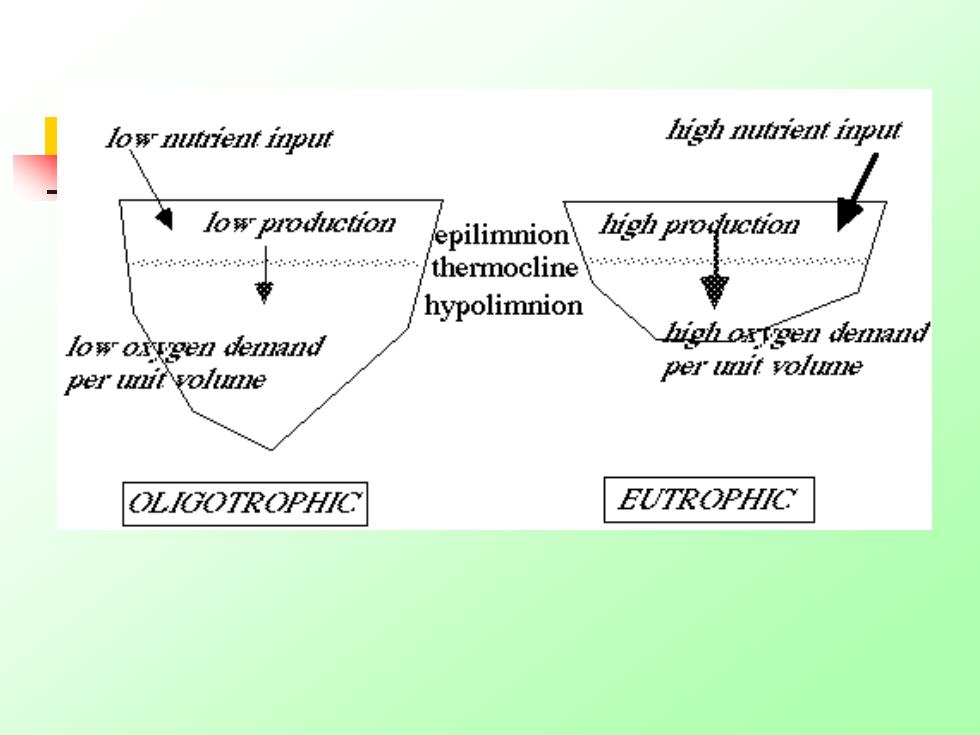
o"e2味iput high nutrient input o翔r1oGo2 epilimnion high production thermocline 5.5.5.55》 hypolimnion lowoxggen demand high osvgen deniand per unit volume per tnit volume LY⑦TRPH, EUTROPHIC
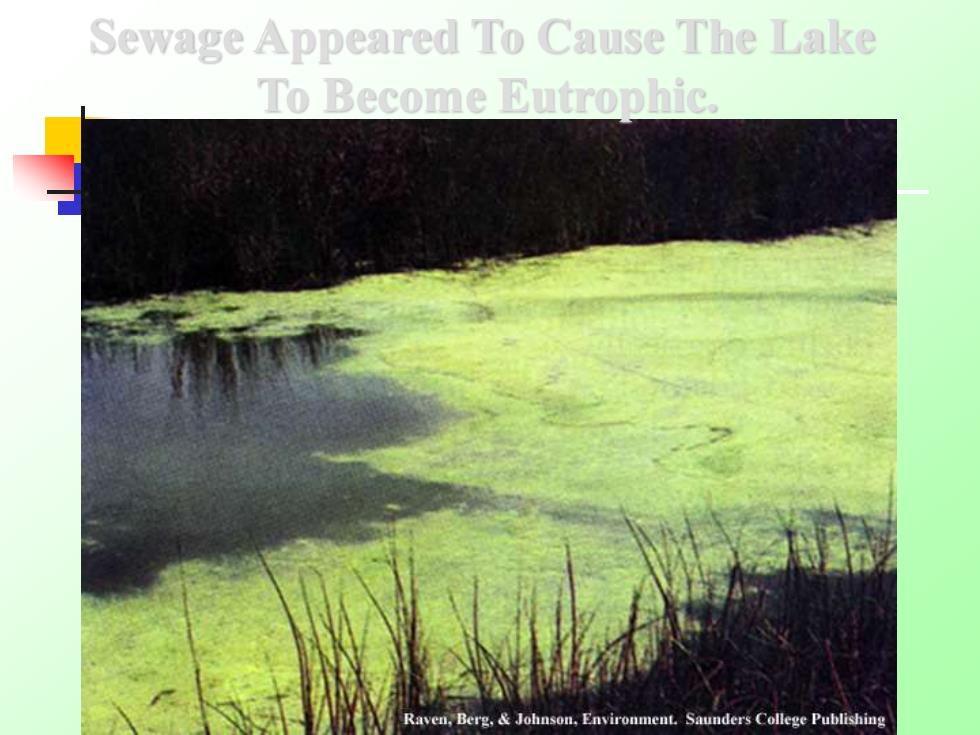
Sewage Appeared To Cause The Lake To Become Eutrophic
Sewage Appeared To Cause The Lake To Become Eutrophic
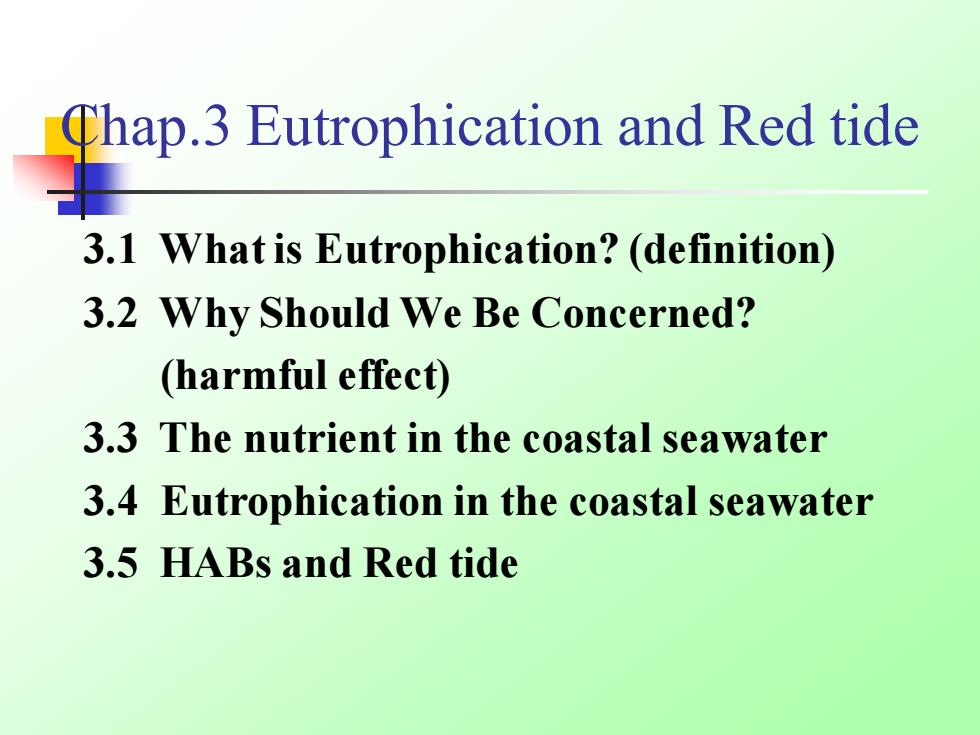
Chap.3 Eutrophication and Red tide 3.1 What is Eutrophication? (definition) 3.2 Why Should We Be Concerned? (harmful effect) 3.3 The nutrient in the coastal seawater 3.4 Eutrophication in the coastal seawater 3.5 HABs and Red tide
Chap.3 Eutrophication and Red tide 3.1 What is Eutrophication? (definition) 3.2 Why Should We Be Concerned? (harmful effect) 3.3 The nutrient in the coastal seawater 3.4 Eutrophication in the coastal seawater 3.5 HABs and Red tide

In shallow lakes and where plant production is high, deoxygenation of the sediment and water occur frequently too (black sediment, Photo 3)
In shallow lakes and where plant production is high, deoxygenation of the sediment and water occur frequently too (black sediment, Photo 3)